#XOCOLATL
Explore tagged Tumblr posts
Text
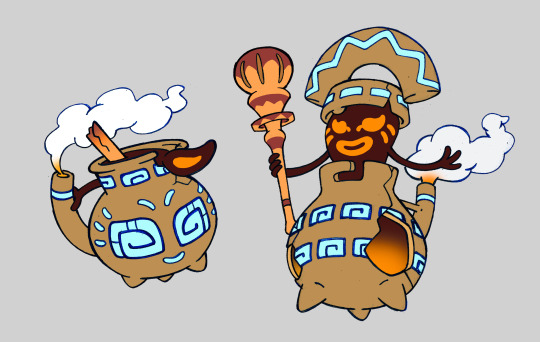

Kroelian SINISTEA & POLTEAGEIST (Fire/Fairy)
They are based in traditional mexican hot chocolate, their hotness and spicyness are why they are a fire type, as they are so hot they constantly produce steam, their spicyness is a reference to how originally chocolate was made with chilli, this is also why there are some little chillis included in the design
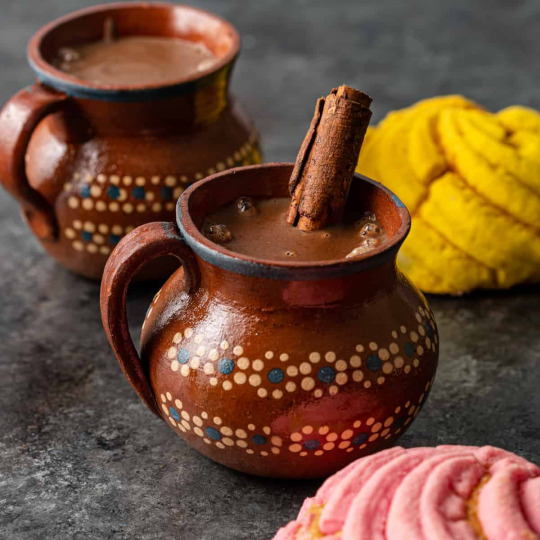
their shiny colors are based on "Arroz con Leche" a traditional sweet rice pudding often served hot and also spiced with cinammon, just like chocolate

SINISTEA is based on a Mayan spouted cup, the spout is used pretty much like a straw to drink the chocolate

POLTEAGEIST is based on the Rio Azul chocolate vessel, a pot that was used to store chocolate
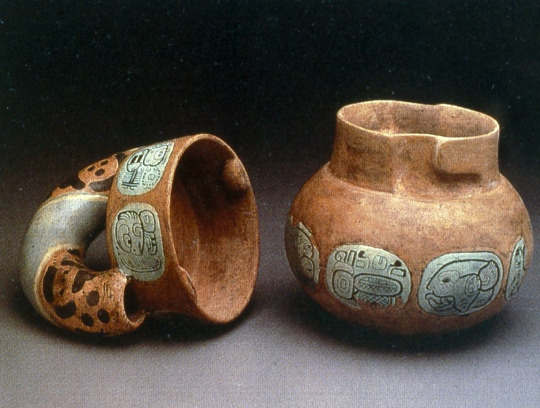
The wooden club POLTEAGEIST is holding is a "Molinillo", is a wooden tool used during the preparation of Chocolate to mix the solid chocolate with the milk or water in the pot, you need to give one to SINISTEA for it to evolve into POLTEAGEIST
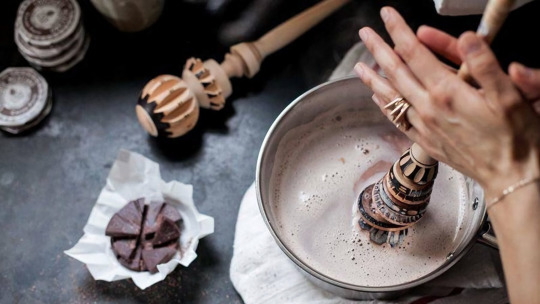
#pokemon#fakemon#fake pokemon#regional form#regional pokemon#sinistea#polteageist#chocolate#hot chocolate#mexican chocolate#xocolatl#fire type#fire pokemon#fire fakemon#fairy type#fairy pokemon#fairy fakemon
2K notes
·
View notes
Text

Xocolatl / Aztec Hot Chocolate (Vegan)
#vegan#drinks#hot chocolate#earth day#mexican cuisine#latin american cuisine#xocolatl#chocolate#chili#cinnamon#plant milk#vanilla#coconut sugar
38 notes
·
View notes
Text

I love that the Mayans were in ways a chocolate based society, like they were the closest we have gotten to a sweet utopian society!🍫
🍫😋🍫
#history#cocoa beans#mayan#chocolate#mesoamerica#food#indigenous people#mayan history#cocoa#native americans#mythology#drink of the gods#mayan culture#food history#drink#money#xocolatl#divine gift#chocolate lovers#mesoamerican history#currency#mayan mythology#dessert#chili peppers#native american culture#historical food#chocolate drink#nickys facts
58 notes
·
View notes
Text

Ok, this time for DEJ2023, I managed to squeeze one of my OC in the pose, Xocolatl (or at least, the human version of her, she is usually a four armed jaguar-centaur with peacock details. Her story is as complicated as her anatomy is).
She love dancing, traditional Indian dance in her original timeline, but the human modern version of her would absolutely LOVE contemporary Indian dancing, jazz and maybe even hip hop.
---
Ok, cette fois, pour DEJ2023, j'ai réussi à caser une de mes OC dans la pose, Xocolatl (ou du moins sa version humaine, habituellement, elle est une centaur jaguar avec des morceaux de paon. Son histoire est aussi compliquée que son anatomie).
Elle adore danser, de la danse traditionnelle indienne dans sa chrono d'origine, mais la version humaine moderne ADORERAIT la danse contemporaine indienne, le jazz et peut être même un peu de hip hop.
3 notes
·
View notes
Text
Xocolatl
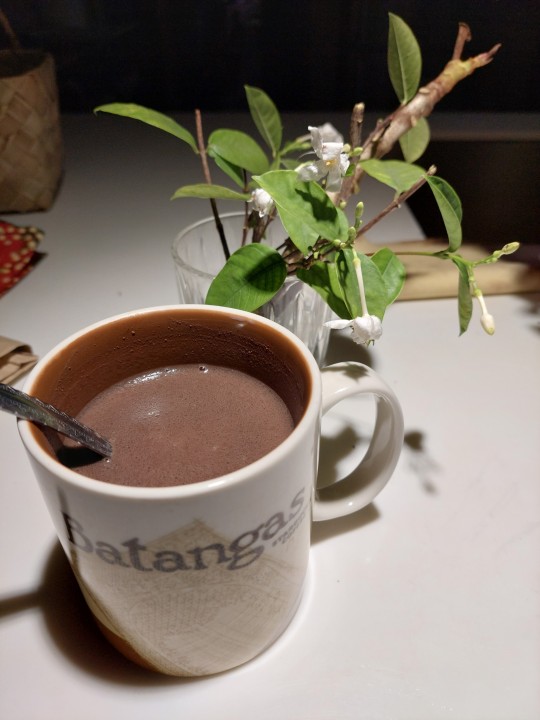
So I just made xocolatl inspired from Bruno's recipe in "Among the Emeralds" by @thecrazyashley-blog :
Xocolatl
1 tablea chocolate (or quarter cup dark chocolate)
1 cup water
1 cup milk
1 dash cinnamon
1 dash chili powder, adjust for preference
1 tbsp honey
Splash of rum, optional
Heat chocolate in milk and water in pot until it melts. Add cinnamon, chili, and honey. Add rum if desired.
5 notes
·
View notes
Text





SELEUSS - XOCO - XOCOLATL DARK CHOCOLATE 82%
BATCH 1360B
SELEUSS® XOCO80™ SERIES: with a cacao content of between 80%-89%, it is designed to bring you the taste of xocolatl or bitter water (Aztec), in a more palatable form. This superior grade dark chocolate with its higher cacao butter content (~50%), has a creamier and smoother mouth feel than the typical dark CHOCOLATE and IS MILDER IN TERMS OF THE acidity and bitterness. This batch is made with cacao from 9.68% Ecuador, 48.41% ivory coast, & 41.91% SELEUSS proprietary blend. LOTTO SPECIALI: BLOCK 135, total bars made: 12
INGREDIENTS: chocolate (cacao beans, Cacao butter, sugar, sunflower LECITHIN, vanilla)
CONTAINS: This product is processed in a facility that contains milk, eggs, wheat, PISTACHIOS, almonds, peanuts, cashews and other nuts.
STORAGE: store chocolate BAR in THE ACCOMPANIED ZIPPEd POUCH, between 54-61°F (~12-16°C), in a dark and dry place, preferably in a wine cooler. Standard refrigerator is fine.
PREPARATION: For best results, please allow chocolate BAR to equalize to room temperature of between 68-72°F (~20-22°C) for approximately 5-15 minutes; depending on ambient room temperature and in an airtight environment to prevent moisture condensation on the surface of the chocolate BAR.
SELEUŠS® chocolates, 1910 1st ave, seattle, wa 98101 (LOCATED ABOVE PIKE PLACE MARKET IN DOWNTOWN SEATTLE, CORNER OF 1ST & STEWART). WWW.SELEUSS.COM WWW.SELEUSSCHOCOLATES.COM [email protected]
Facebook.com/seleuss seleuss.tumblr.com instagram.com/seleuss @SELEUSS






NOTE: Contrary to popular industry marketing belief, this bar of dark chocolate is not a super-food, it will not cure cancer or any disease! At around 18% sugar, its just health-ier compared to our milk chocolates (~40% sugar). A good diet and regular exercise will outweigh calorie counting anxiety any day. So don't worry, enjoy, chocolate is delicious! Check out the documentary; “The Chocolate Diet” (2015), free to stream on tubitv.com/movies/660805/the-chocolate-diet
0 notes
Text
Xocolatl Small Batch Chocolate
Xocolatl Small Batch Chocolate
(404) 333-8562
0 notes
Photo
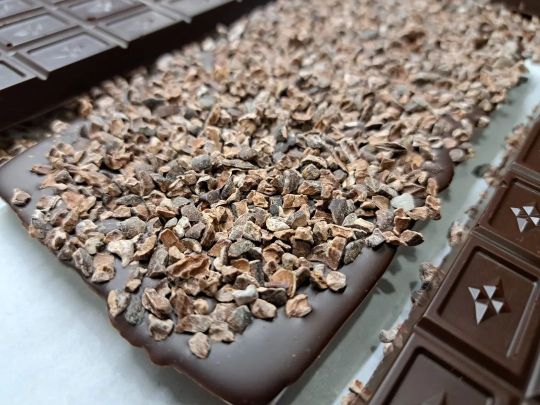
A new batch of our XOCO 85% extra dark chocolate 🍫 bars with roasted cacao nibs. #seleussxoco #darkchocolatebar #xocolata #xocolatl #xocolat #darkchocolate #cacaonibs #roastedcacaonibs (at Seleušs Chocolates) https://www.instagram.com/p/CnCptHTJscS/?igshid=NGJjMDIxMWI=
0 notes
Photo
Awwwww, mon skittle et sa guimauve au chocolat !
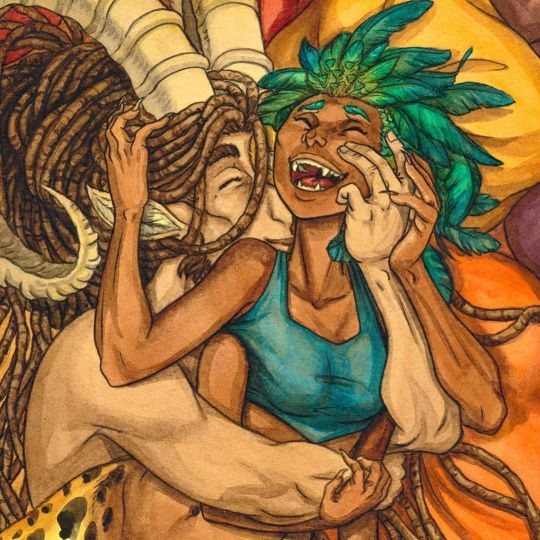
Just a big snuggly hug of Xocolatl and Boursin for my friend Kineko ! Because there is never too much love. ♥ ————————– Juste un gros câlinyu de Xocolatl et Boursin pour mon ami Kineko ! Parce qu'il n'y a jamais trop d'amour. ♥
* Xocolalt belongs to Kineko. *
#Taur #Centaur #hybrid #Monsterly #ethnic #taurcharacter #centaurcharacter #fantasy #fantasycharacter #characterconcept #characterdesign #avianpeople #aviananthro #aviancharacter #humanoid #bear #bearcharacter #Ibex #jaguar #peacock #couple #love #painting #watercolor #watercolorpainting #illustration #art #artstagram #artistsoninstagram #traditionnalart
https://www.instagram.com/p/Cp0pM0qr66N/?igshid=NGJjMDIxMWI=
20 notes
·
View notes
Text
woke up and someone spilled vanilla extract all over my dash, so as punishment you strange little beasties are getting all the VANILLA FACTS i know:
vanilla is the 2nd most expensive spice in the world (2nd to saffron)
which is why more than 99% of what we call "vanilla extract" is actually vanillin (vanilla's dominant flavor compound) and is not extracted from real vanilla.
luckily, even professionals struggle to tell the difference when it comes to things like baked goods. but there is a distinct difference in non-heat treated products like vanilla ice cream. real vanilla has a more complex, individualized flavor profile.
why is vanilla so expensive? because it is a ridiculously delicate & demanding crop. complete primadonna.
vanilla beans come from vanilla orchids. these crazy flowers bloom for A SINGLE DAY and have to be HAND-POLLINATED in a process that is exhausting, delicate, and requires specialist knowledge passed down over generations.
then, if you're lucky, you get vanilla beans.
which then require months of further specialized treatment.
the entire process takes about a year and can go wrong at any stage
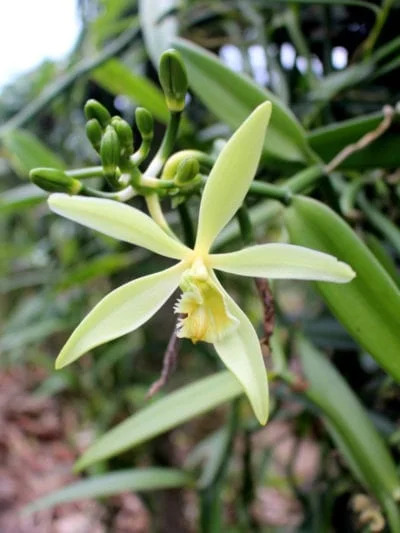
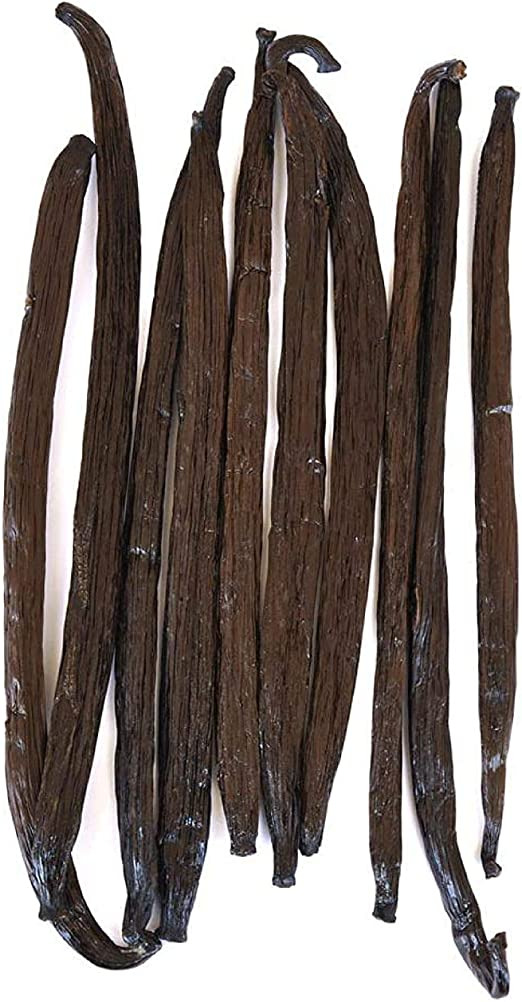
vanilla has been cultivated for over 800 years (possibly much longer). the first known cultivators are the Totonac, an indigenous people of Mexico.
the Aztecs used it as a sweetener to balance out the bitter taste of cocoa. it was popular in a drink called xocolatl--the precursor to modern hot chocolate!
it is only pollinated by a very specific orchid bee!!!
which is why no fruit could be grown outside of Mexico until the 1800s
Edmond Albius, born into slavery, invented the pollination method we still use today--launching a global industry when he was just 12 years old.
today, the majority of the world's vanilla is grown in Madagascar
if you want real vanilla, read the labels carefully--it's harder to find than you think!
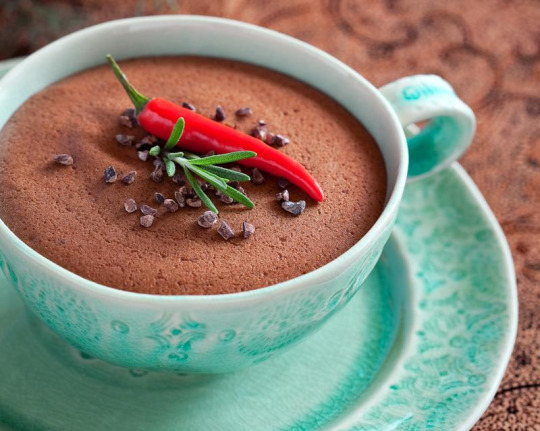
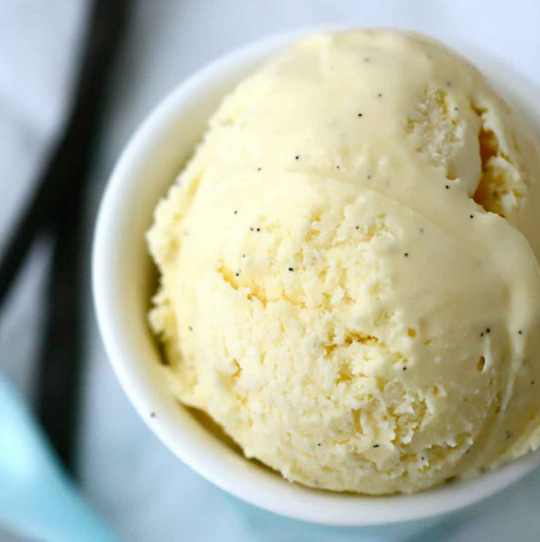

in conclusion, those tiny black specks you see in fancy vanilla ice cream? those are vanilla bean seeds! itty bitty orchid seeds!!! they are delicious and also a PRISSY BITCH!
(src)
#Vanilla Extract#i open the tumblr app and immediately my nostrils are invaded by the overwhelming stench of vanilla#also if you want real vanilla extract at a discount: check out stores like HomeGoods TJMaxx Marshalls etc#the foodstuffs section tends to have fancy nonperishables for much cheaper than upscale grocery stores#you can get things like saffron truffles fancy oils at surprising prices#still expensive but like. 50% cheaper#or just shoplift if that's your thing i won't tell you how to live your life#did i just spend an hour writing this? yes. why did i do that? i don't KNOW
69K notes
·
View notes
Note
hello i love your word lists and i was wondering if i could request one specifically for baking! i need title inspo for a story i'm writing :)
Some Baking Vocabulary
Aeration - the treatment of batter or dough by charging with air to produce increase in volume
Ancient grains - all whole grains are considered ancient because we are able to trace their roots back to the beginning of time
Caramelization - cooking sugar until it’s brown or golden
Chocolate - from the Aztec word xocolatl, meaning "bitter water"; a food derived from the cacao bean fermented, dried, roasted, ground and processed into cocoa powder; a liquor used to make a variety of chocolate products
Citron - the sweetened rind of a fruit
Clarify - to make a substance clear or pure
Courverture chocolate - high quality chocolate used for tempering and glossy coating
Crescent rolls - crescent-shaped bread rolls having a flaky texture
Crushing - formation of dry crust on surface of doughs due to evaporation of water from the surface
Currant - the acidulous berry of a shrub, usually dried and dark in colour
Essences - aromatic compounds used for flavouring confectionery; can be natural or synthetic, or blends of both
Ganache - a rich, smooth mixture of chocolate and cream is used as a filling, frosting, or glaze
Genaese - fatless sponge cake used as base in decorated cakes
Glaze - coat a dessert with a liquid, like melted chocolate, mirror glaze, sugar glaze, etc.
Hearth bread - yeast bread baked in round, oval or free form on hot, flat baking surfaces in an oven
Liqueur - spirits sweetened with sugar and flavoured with essences, fruit juice, or essential oils
Macerate - to soak the fruit in liquid, often sugar or alcohol, to soften it and enhance its flavor
Marble - creating a swirl effect by incorporating two doughs or batters of different colors or flavors together
Mise en Place - a French term meaning “everything in its place,” referring to the preparation and organization of ingredients before baking
Molasses - light to dark brown syrup obtained in making cane sugar
Old dough - yeast dough that is overproofed; dough may have tripled in volume and fallen
Oven spring - the rapid rise of bread dough during the first few minutes of baking due to the expansion of gas bubbles; critical for achieving a good loaf volume and a light, airy crumb
Petit fours - small fancy cakes that can be placed in the mouth in one piece
Plaiting - the weaving of one or more ropes of dough into an ordered design
Ramekin - a small dish made of glass or ceramic that is used for serving baked goods like custards, cakes, souffles, and more
Sources: 1 2 3 4 5 ⚜ More: Word Lists
So glad to hear this, thank you! Hope this helps with your search. Would love to read your work if it does. Otherwise, you could go through the sources, perhaps I wasn't able to include the right word/phrase for you. Also have more food-related posts here :)
#baking#writing reference#terminology#writeblr#dark academia#spilled ink#literature#writers on tumblr#writing prompt#poets on tumblr#poetry#creative writing#writing inspiration#writing ideas#writing resources
72 notes
·
View notes
Note
Let us test your patience now! How about ROMANTIC yandere headcannon or fic for our mutual fav kaname with a human day class darling? Cucu- 🌕 anon
YAN. KANAME KURAN WITH DAY CLASS S/O
Note: Lmaooo. PS: writers block is killing me. o(╥﹏╥)
Pairing: Kaname Kuran x GN! Human s/o
WARNING(S): Yandere themes, manipulation, bad writing
Want more? → Vampire Knight Masterlist


Being his partner, you're destined to live a lavish lifestyle. Gifts have become an everyday occurrence between the two of you. It's his way of leaving his mark on you, gifting you with jewels and pricey trinkets, though he'd never tell you that. When noticing him with a matching one of his own, your relationship should be clear as day.
St. Xocolatl's Day was something he cared little about prior to his relationship with you. However, it was somewhat of an obligation to attend (to get to his classes). As he exited the gates, his eyes were quick to find you as they'd always have been. You stood near the end of his line, patiently waiting your turn. Little did you know, that was enough to make his heart swoon.
You were a bit reluctant to throw out the chocolates. This day came only once a year and you wished to eat to your heart's content. The variety of chocolates wrapped in colorful, florescencent plastics that were just as eye-catching as you'd expected. But from the looks of it, you wouldn't get to try any.
“Do these hold some importance to you?”
If you had not been his lover, you would've found it to be a genuine question. But the hint of dismay swimming in his usually calm gaze was a dead give away. He looked like a kicked puppy, an expression that was strictly reserved for your eyes. You were quick to shake away his worries, pushing the wrapped goods into his open arms.
The only one that remainded was his own, marked with such intricate and neat calligraphy that only he was capable of.
~~~ To my dearest, {Name}, whom I miss terribly. ♡
Every. Aching. Moment
Kaname is not one to shy away from his feelings, especially the ones involving you. The relationship you share is ambiguous, to say the least. The adoration and infatuation in his gaze are evident, and yet he's willing to keep it a secret for the sake of your reputation. Frankly, he's quite the selfish man, and at times he can't help but act rashly when it involves you.
The Pureblood wants to possess you and everything you are. He can hardly keep his hands off you as is, and the scarce amount of time you spend together only fuels his cravings. But with a little interference, I'm sure he could pull some strings. He is a Kuran after all, what can't he do for you?
Whether he wants to admit it or not, humans are very fragile beings. If he so chose to, he could slaughter thousands with just a mere snap of his fingers. At times, he wishes to do just that. After all, you had always been surrounded by other morals who practically jumped at the opportunity to suck away your time — Leeches, that's all they are. Blood-sucking leeches (hypocrite).
It's a shame he can't stay with you for the entirety of the day. During your absence, he's grown rather irritable with those beneath him. “Sharing you,” or rather your time, is and shall remain one of his least favorite pastimes. Truthfully, the thought of turning you into a vampire has crossed his mind more times than he'd care to admit.
“It's been quite some time since our last interaction. Are you avoiding me, {Name}?” His words came out as a feeble whisper, with how close he was to you, that was more than enough. “You've been spending far too much time with those in the day class and frankly, I've grown a bit jealous.” His warm breath grazed the shell of your ear as he gently rested his hand along the small of your back.
“Can't I be a little selfish? Just this once.”
Your relationship is bound to spark the interest of the aristocrats roaming the night class. It's not everyday they see the Great Kaname Kuran grow so soft for a mere human. Only a fool wouldn't be able to see how tightly you have him wrapped around your finger. But the real question is why?
Oh what a shame, no one will truly understand why. Those who've tried weren't fortunate enough to make it back. Their death being by the hand of a Pureblood who are they to say anything? In their eyes, your situation remains an anamoly regarding the many faces of Kaname Kuran. Though it seems he's not too keen on playing nice when you're involved.
An immortal life can be a blessing and a curse. Even so, it happened to be one thing Kaname wouldn't wish to liveanything. You've spoiled him far too much, at this rate you'll be a vampire in no time!

#—🍁#x reader#yandere x darling#yandere imagines#yandere x reader#yandere#vampire knight headcanons#vampire knight#kaname kuran x reader#kaname kuran#yandere x y/n
766 notes
·
View notes
Photo
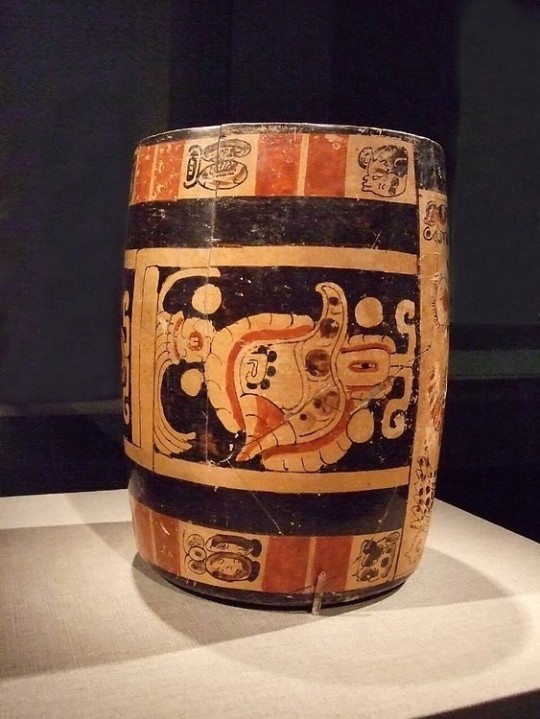
Chocolate in Mesoamerica
Chocolate was one of the most desired foods of Mesoamerica and was consumed by the Olmec, Maya, and Aztec civilizations, amongst others. Its consumption even spread via trade routes to other parts of the Americas including the Chaco Canyon in modern New Mexico. The earliest known use of chocolate was by the Olmec around 1900 BCE and, enjoyed as a drink, it was drunk from special round jars known as tecomates. The Maya used tall cylinder beakers for drinking chocolate, and these very often had text on the rim indicating their intended use. The Aztecs also had richly decorated tall cups specifically reserved for chocolate drinks. It may be that such conspicuous vessels were designed to impress onlookers that the drinker had the means and status to enjoy such a prized drink.
Cultivation & Value
Chocolate is made from the beans of cacao pods from the Theobroma cacao tree (actually native to South America) which was first cultivated in extensive orchards near the Pacific and Gulf coasts of Central America, especially in the Xoconusco region and the valleys of the Sarstoon, Polochic, and Motagua Rivers (modern Guatemala and Belize), where the tree thrives in the warm and humid climate. There were, in fact, four varieties of cacao bean or cacahuatl, as the Aztecs knew them, and the corruption of this word or their term for the chocolate drink - xocolatl - is probably the origin of the word chocolate.
So esteemed was chocolate that beans were a commonly traded item, very often demanded as tribute from subject tribes and even used as a form of currency by the Aztecs. In fact, cacao beans were so valuable that they were even counterfeited either to pass as currency or, even more fiendishly, hollowed out of their valuable interior and refilled with a substitute such as sand. As a currency, we know that in the Aztec markets one cacao bean could buy you a single tomato, 30 beans got you a rabbit and, for the more ambitious shopper, a turkey could be had for 200 beans.
As an expensive import then, chocolate was drunk mainly by the upper classes and consumed after meals, typically accompanied by the smoking of tobacco. It may have been enjoyed mixed with maize gruel by the poorer classes at important events such as weddings, but some scholars maintain that the pure chocolate drink was an exclusive status symbol of the nobility. Curiously, it could even be given to favoured sacrificial victims as a final treat before they departed this world, for example, at the annual Aztec festival of Panquetzaliztli held in honour of Huitzilopochtli.
Continue reading...
24 notes
·
View notes
Text
what X-Men characters names would be if they were cookie run characters 😔
Cyclops: Strawberry Beam Cookie
Jean: Orange Glazed Cookie
Wolverine: Adamantium Cookie
Storm: Sugar Cloud Bread Cookie
Beast: Blue Raspberry Monster Cake Cookie
Rogue: Cherry Cream Pie Cookie
Gambit: Chocolate Beignet Cookie
Morph: Shapeshifter Candy Cookie
Jubilee: Fizzy Candy Cookie
Sunspot: Sun Candy Cookie
Magneto: Copper Chip Cookie
Nightcrawler: Blueberry Strudel Cookie
Shadowcat: Vanilla Shadow Cookie
Angel: Angel Food Cake Cookie
Iceman: Frozen Berry Juice Cookie
Avalanche: Chocolate Shake Cookie
Blob: Thick Chocolate Chunk Cookie
Toad: Green Apple Gel Cookie
Quicksilver: Speedy Silver Chip Cookie
Pyro: Spicy Mango Cheesecake Cookie
Mystique: Blueberry Shapeshifter Cookie
Professor X: Xocolatl Cookie
Cable: Shining Candy Cookie
Colossus: Chewy Honey Cake Cookie
Sabretooth: Tiger Tail Cookie (like the donut)
Scarlet Witch: Crimson Chip Cookie
16 notes
·
View notes
Text
The companions and Tav prepare and enjoy Hot Chocolate
I'm feeling a little inspired by the season to try to enjoy the little things. Including coco. And since the BG3 brainrot won't go away, lemme speculate for fun.
Astarion: Astarion would politely ask Tav to make the coco. Dark chocolate, something fruity. Double cream but not too much so it's still thick and rich. Very little sugar. Then he'd spike it with brandy when Tav wasn't looking and raise a toast to the two of them. He doesn't ask for himself tho. He asks because he thinks Tav would like it. Gale: Gale would absolutely pour his heart into preparing a French style hot coco topped with whipped cream, chocolate shavings and a toasted marshmallow a la Ned Flanders style. Then he would invite Tav to curl up on their sofa near the fire and chat about holidays, with or without anecdotes and trivia about various traditions around Toril Karlach: Coco powder mix and mini marshmallows. Plain, simple, beloved. Karlach would lean into the childhood memories, and reminiscing about beloved holiday traditions. Maybe while eating the "leftover" mini marshmallows by the handful. Wyll: Red Velvet Hot Chocolate. Swirled in a glass mug with whipped cream stripes and a candy cane stir stick. Showy for sure, but the flavor is delightful and playful. He and Tav would sit and discuss intrigue and make playful looks at one another with whipped cream mustaches.
Lae'zel: She doesn't really understand and ends up making Xocolatl (the chocolate drink from the Aztecs made with raw cacao, water and maybe chili pepper). She finds it invigorating, despite its bitter flavor. When Tav makes it for her, she scoffs at first, but the sweet beverage is certainly an experience for her. Shadowheart: Having never had it before, she finds it pretty frilly and indulgent. Tav makes a simple coco mix for her anyway and she is delighted by it and tops it with everything. Whipped cream, marshmallows, sprinkles, graham crackers. Its a messy, colorful, atrocity. She may or may not play with the whipped cream can to tease Tav.
These are just my speculations. And I'm sure everyone has different ideas of hot chocolate vs coco mix...whatever. Just for fun. How do you think they would enjoy their hot chocolate?
#bg3#baldur's gate 3#baldur's gate iii#baldurs gate#baldurs gate companions#karlach#astarion#gale#shadowheart#lae'zel#baldurs gate 3 headcanons#baldurs gate 3
42 notes
·
View notes
Text
Submitted via Google Form:
I have a world in which a lot of words, majority being nouns are never actually translated and thus languages all have common and unaltered loan words. What I mean is like 'chocolate' is always 'chocolate', there's no 'chocolat' 'coklat' 'cokolada' etc... To make it easier, all languages do have a similar alphabet. If this continues on a vast scale, how do languages develop and how understandable are different languages?
Tex: What is your base language? Why is it not another language?
To illustrate a point, here is the etymology of the word chocolate (Wikipedia):
Cocoa, pronounced by the Olmecs as kakawa,[5] dates to 1000 BC or earlier.[5] The word "chocolate" entered the English language from Spanish in about 1600.[6] The word entered Spanish from the word chocolātl in Nahuatl, the language of the Aztecs. The origin of the Nahuatl word is uncertain, as it does not appear in any early Nahuatl source, where the word for chocolate drink is cacahuatl, "cocoa water". It is possible that the Spaniards coined the word (perhaps in order to avoid caca, a vulgar Spanish word for "faeces") by combining the Yucatec Mayan word chocol, "hot", with the Nahuatl word atl, "water".[7] A widely cited proposal is that the derives from unattested xocolatl meaning "bitter drink" is unsupported; the change from x- to ch- is unexplained, as is the -l-. Another proposed etymology derives it from the word chicolatl, meaning "beaten drink", which may derive from the word for the frothing stick, chicoli.[8] Other scholars reject all these proposals, considering the origin of first element of the name to be unknown.[9] The term "chocolatier", for a chocolate confection maker, is attested from 1888.[10]
To illustrate another point, here is an excerpt for the article on the history of the English language (Wikipedia):
English is a West Germanic language that originated from Ingvaeonic languages brought to Britain in the mid-5th to 7th centuries AD by Anglo-Saxon migrants from what is now northwest Germany, southern Denmark and the Netherlands. The Anglo-Saxons settled in the British Isles from the mid-5th century and came to dominate the bulk of southern Great Britain. Their language originated as a group of Ingvaeonic languages which were spoken by the settlers in England and southern and eastern Scotland in the early Middle Ages, displacing the Celtic languages (and, possibly, British Latin) that had previously been dominant. Old English reflected the varied origins of the Anglo-Saxon kingdoms established in different parts of Britain. The Late West Saxon dialect eventually became dominant. A significant subsequent influence on the shaping of Old English came from contact with the North Germanic languages spoken by the Scandinavian Vikings who conquered and colonized parts of Britain during the 8th and 9th centuries, which led to much lexical borrowing and grammatical simplification. The Anglian dialects had a greater influence on Middle English.
Linguistics is a large, old, and complex subject. It has a lot of overlap with other sciences, and there are always new things being found out about it. Below is a list of links to help introduce the depth and breadth of languages and their development:
Further Reading
Linguistics (Wikipedia)
Global language system (Wikipedia)
Integrational linguistics (Wikipedia)
Language geography (Wikipedia)
Dialect continuum (Wikipedia)
Sprachbund (Wikipedia)
Writing system (Wikipedia)
List of creators of writing systems (Wikipedia)
Ebonwing: If your world’s languages evolved and changed in a broadly similar way than ours did (independently all over the world, resulting in a great deal of linguistic diversity) this is unrealistic. Pronunciation naturally changes as languages evolve over time; English wasn’t always pronounced the way it is today, either. As a result, a word loaned from another language isn’t going to sound the same way a few hundred years later.
Plus, loan word pronunciation changes are also driven by languages having different phonology from the source language. Japanese loaned chokoretto from chocolate, but it’s really not pronounced the same way. Sometimes even the meanings change in the process; in German, a Handy (loaned from English) is actually a mobile phone.
Of course, if you’re not going for an Earth-like linguistic background, you have more leeway in doing things like this.
Utuabzu: Something you should consider when dealing with multiple languages is that every language has its own phonology - set of sounds - and phonotactics - rules about how sounds can be combined - and these can differ significantly. These differences become particularly clear with loan words, as speakers will alter the word to fit their language’s rules and available sounds, eg: Hawaiian alters Christmas to kalikimaka, because it doesn’t have the sounds ‘r’, ‘s’ or ‘t’ and doesn’t allow consonants to follow consonants or to end a syllable.
This doesn’t even account for the problems of trying to use a single script for all languages. Different languages have different rules about what sounds are distinct enough to differentiate words. For instance, English has a relatively limited number of vowels, but other Germanic languages have more, which they write using additional letters, eg. å, ä, æ, â, ø, ö, ü, etc. Some languages, like Icelandic, even have additional consonant letters - þ and ð - because it’s necessary to clearly distinguish those sounds. Then there are languages that aren’t generally written with roman script, like Hindi, which needs to clearly distinguish aspirated consonants, or Chinese languages, which need to account for lexical tone*. If you want a script that can depict all the many, many possible sounds of human language, you’re going to end up with something like the International Phonetic Alphabet, which is far too unwieldy to be used to write any single language, and even linguists don’t generally use unless they’re describing the sounds of a language. Especially because most languages will consider multiple sounds to be equivalent and interchangeable that IPA uses distinct characters for, because different languages will lump together different sets of sounds and usually omit many of them entirely. (Eg, Standard English dialects lack the voiced glottal fricative
Much of the time, it’s just going to be easier to use a purpose-made script that can actually depict the language accurately, and even when that doesn’t happen, the borrowed script is likely to be altered and evolve over time to accommodate the needs of its users. Roman, Greek, Cyrillic, Arabic, Hebrew, Armenian, Georgian and the vast Brahmic family of scripts are all derived from a common ancestor, Proto-Canaanite, and have mutated and evolved over the course of 3500 years to suit the languages that use them.
This further complicates loan words, as they then need to be altered for the script, because not all scripts have equivalent characters, eg Japanese hiragana ら is most often realised as /ɾa/ or /la/ which to English speakers sounds like ‘ra’ or ‘la’, but to Japanese speakers are considered the same sound.
A further complication also comes from grammar, as many languages have rules that alter words based on their role in a sentence or the surrounding words. A common way to do this is with morphemes - units of language that have independent meaning but cannot appear on their own, eg. suffixes and prefixes (together with infixes, which get shoved inside the root, and circumfixes, which get split and tacked either side of the root, these are called affixes) like ‘-s’, ‘-ed’, ‘re-’, ‘pro-’, ‘anti-’, etc. - these are attached to the root, the base word, to convey additional information.
Agglutinative languages (like Finnish or Inuktitut) add multiple affixes to indicate case and number of nominals,, while fusional languages (like German or Russian) use one affix to express both. Polysynthetic languages (like Algonquian languages) frequently and extensively alter both to convey a lot of information. Other languages, most famously Welsh, alter the sound of a word based on the words immediately around them (mutation).
All these factors are going to make what you want here really difficult to achieve. If you are determined to have this, you probably need all the languages in your world to have a relatively recent common ancestor that had a well established literary standard and standardised orthography. By recent I mean very recent. The Romance languages have been diverging for over 2000 years (Cicero was complaining about the Sardinian dialect of Vulgar Latin in the 1st Century BCE), while the entire Indo-European language family - containing languages from Icelandic to Sinhala and the first languages of approximately 46% of the global population - is estimated to have been diverging for about 6000-10,000 years, depending on the theory. Our species, Homo sapiens, is over 300,000 years old, so this isn’t very long in comparison.
*lexical tone is one of two main tone systems, the other being prosodic tone. Lexical tone means that individual words have a tone that impacts their semantic meaning, while prosodic tone is carried across multiple words and conveys pragmatic meaning. This difference is why native speakers of lexical tone languages (like Mandarin or Zapotecan languages) can often sound oddly flat when speaking prosodic tone languages (like English). The roman alphabet was not created to deal with lexical tone and Vietnamese gives an excellent example of how much it needs to be altered to depict tones.
Blue: Natural languages change for so many different reasons; some of the big contributing factors are technological and cultural changes. The farther apart they are geographically, the harder it is to maintain the homogeneity. One would think that the advance of modern technology, such as the internet, would smooth out the differences, but it does not appear to be the case (see Wikipedia’s article on ELF)
Language has a socioeconomic, cultural, and religious (e.g.: sacred language) significance. It can be a status symbol: French was adopted at various courts across Europe and became the distinguishing feature of aristocracy. People are often very reluctant to part with their native language, because it means giving up a part of their identity. If it's an artificial language imposed on different communities, why would they accept it and refuse their own language? If this situation developed naturally, how did it happen?
Lingua franca – "common language". Some of the historical examples are Akkadian, Koine Greek, and Latin; more recent ones are English, French, and Arabic. The spread of linguae francae is often associated with the colonial efforts to establish the language of the colonizer as the primary language of communication, but it is not always so: Tupi (Brazil) and Classical Maori (New Zealand) were adopted by the colonizing population. A lot of linguae francae were adopted and stayed dominant to facilitate trade most and foremost.
Due to the cultural and economic hegemony, English is arguably the lingua franca of the world. One of the reasons why English is the dominant language of international communication is the expansion of the British Empire. In Russia, lingua franca is (obviously) Russian, but there are many native languages across the country that are officially recognized and taught at schools in their respective regions; Russian also serves as a lingua franca in many post-Soviet countries. In the Americas, there are obviously native languages that are very far removed from English and Spanish. In all these examples, native languages are used alongside the common languages: the lexicon and grammar of the native languages perseveres.
There is also such a thing as an auxiliary language - the kind of language that's been artificially constructed to aid communication internationally (esperanto) or for a more limited group (Interslavic). Esperanto is the only one that is relatively well-known and widely used; none of auxiliary languages have ever become widely spread though. That might change one day, but then the question becomes: will they stay the same across the globe, or will they also see regional changes?
It's theoretically possible for a language to exist in a time capsule if it's used by a small isolated community that doesn't see much change; but even then, there's a possibility of phonetic shifts over the years.
Let's for a second imagine that it did happen to a degree, but only with nouns.
Here we run into another issue that would hinder understanding: a lot of human languages view verbs rather than nouns as a central feature of a sentence. On a larger scale, verbs convey the relationships between nouns and actions you perform with an object: “I ate chocolate” and “I bought chocolate” are two very different things, and just knowing the word "chocolate" tells you nothing about the meaning of the sentence in general.
16 notes
·
View notes